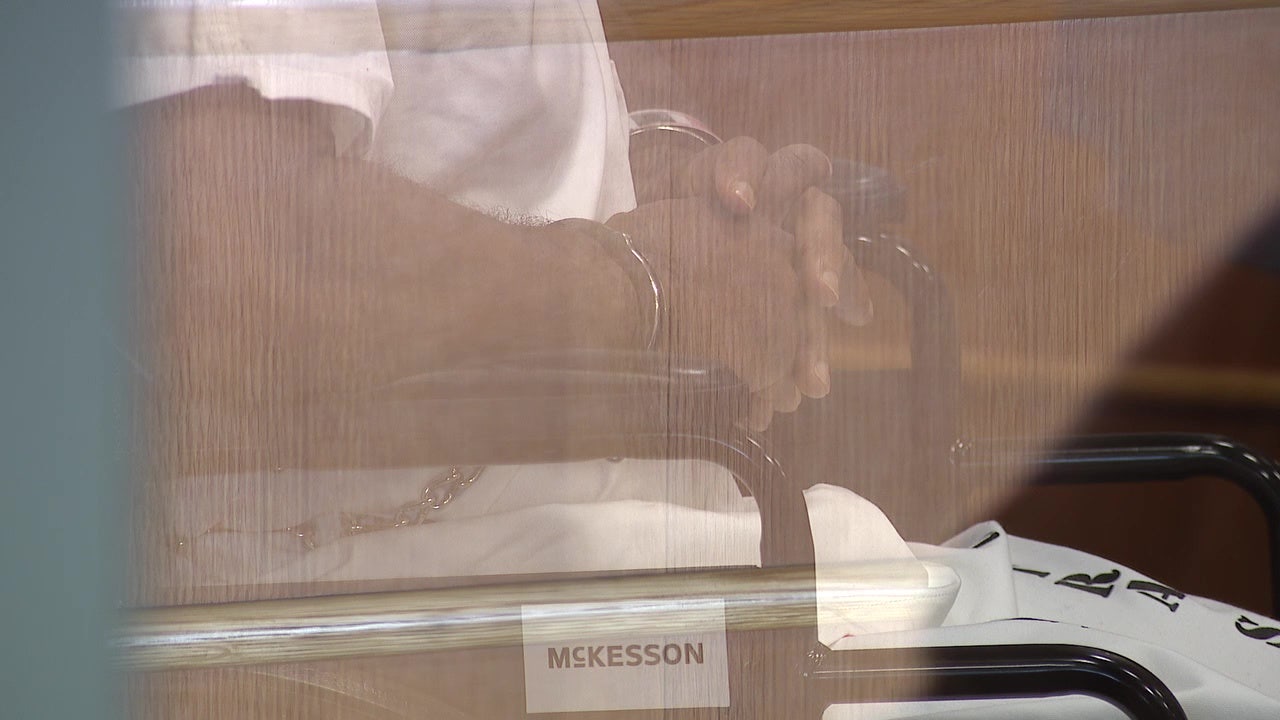Wisconsin
Wisconsin’s ‘Smart Growth’ law requires planning to meet housing needs, but enforcement is lax – Wisconsin Watch

Reading Time: 7 minutes
News414 is a service journalism collaboration between Wisconsin Watch and Milwaukee Neighborhood News Service that addresses the specific issues, interests, perspectives and information needs identified by residents of central city Milwaukee neighborhoods. Learn more at our website or sign up for our texting service here.
Click here to read highlights from the story
Robin Palm lives in Milwaukee and works for the village of Mount Pleasant, but he’s willing to metaphorically die on a hill in Wauwatosa in the name of affordable housing. Or more precisely, on a 10-acre plot of land in the Milwaukee suburb.
The 42-year-old urban planner saw great promise in that Wauwatosa land, home to multiple industrial buildings. It’s near Milwaukee Regional Medical Center, the city’s largest employer; top-rated schools; and The Village business district. It’s also the only location in Wauwatosa’s comprehensive land development plan that’s classified for the highest density of multi-family housing.
Two developers initially planned to build six apartment buildings at the site. The project would have brought 475 units, including 77 designed for lower-income workers. Palm called that a “win” for a city where 92% of the workforce lives elsewhere.
But after the project’s funding fell through, the Wauwatosa Common Council voted in March to allow a storage company to occupy the space. Council members cited concerns about otherwise leaving the property vacant.
The decision infuriated Palm, who constantly hears about southeast Wisconsin’s housing crisis. It also conflicted with the city’s development plan at a time when county leaders aim to add affordable housing in Wauwatosa and other suburbs to ease the region’s racial segregation and boost opportunity.
So Palm, a regional representative in the American Planning Association’s Wisconsin chapter, is pushing back. He sued Wauwatosa’s zoning administrator after the city’s Board of Zoning Appeals declined to review his complaint related to the decision.
Palm has no personal stake in the matter, and his lawsuit has thus far failed to gain traction in court. Wauwatosa Mayor Dennis McBride says the challenge lacks merit, and he defends his city’s commitment to affordable housing.
“In sheer numbers of projects, we probably are the leader in suburban Milwaukee,” McBride told Wisconsin Watch.
But Palm said he filed the lawsuit to make an argument that transcends the fate of one property: Local governments should follow their own state-mandated plans for affordable housing.
The Wisconsin Legislature enacted a “Smart Growth” law nearly 25 years ago requiring local governments to craft plans to guide land use decisions. Although the law says such plans must be consistent with local zoning ordinances, it lacks enforcement, yielding no consequences for disregarding it.
“Generally speaking, no, that law does not have a lot of teeth,” said Kurt Paulsen, an urban planning professor at the University of Wisconsin-Madison.
Communities in other states may lose funding or face lawsuits from local developers when they violate state-mandated plans, he added, but not in Wisconsin. “So there’s really no way to enforce that law.”
Absent intervention by courts or lawmakers, Paulsen says the state leaves the burden on residents to ask their village boards or city councils whether they are meeting their legal obligations to provide a range of housing options to residents.
Wisconsin’s Smart Growth law emerges
Wisconsin lawmakers have long been reluctant to meddle in local planning. But concerns about urban sprawl and a shortage of affordable housing spurred the Legislature to enact the Smart Growth law, which Republican Gov. Tommy Thompson signed in 1999. It applies to a range of government units, including cities, towns, villages and counties.
Some local officials welcomed the law. Others grumbled. An Ozaukee County supervisor in 2008 called it “lousy legislation that forced us to do something that we were going to get around to doing eventually” as the county finalized its mandated land use plan.
Amid other provisions, the law requires local, county and regional governments to detail plans for “a range of housing choices that meet the needs of persons of all income levels and of all age groups and persons with special needs.” The law says that if a government “enacts or amends” certain zoning or mapping policies, the changes must be consistent with their comprehensive plans.
But the law does not spell out enforcement mechanisms, and courts have not set precedent on how it should be interpreted.

“There have been no reported appellate court cases in Wisconsin dealing with the issue of how housing is addressed in local comprehensive plans,” said Brian Ohm, a retired professor in the Department of Planning and Landscape Architecture at UW-Madison, calling the lack of legal challenges “a surprise to a lot of people.”
The Milwaukee County suburb of River Hills — which has allowed only single-family homes, mostly on multi-acre lots, since its incorporation in 1930 — faced allegations of violating the Smart Growth law in a 2019 lawsuit, but the dispute was settled out of court.
Some local government officials initially thought the law also required decisions over conditional use permits — zoning exceptions granted to property owners — to comply with their comprehensive plans. But Gov. Scott Walker in 2016 signed a law stating: “A conditional use permit that may be issued by a political subdivision does not need to be consistent with the political subdivision’s comprehensive plan.”
Wisconsin still has a housing crunch, particularly for those with lower incomes. The state is short about 127,000 affordable rental units for its roughly 196,000 “extremely low-income” renter households — defined as a family of four making less than $26,500, according to the National Low Income Housing Coalition.
Kori Schneider-Peragine, senior administrator of the Metropolitan Milwaukee Fair Housing Council, said she once held “great hope” for the Smart Growth law, thinking it might prompt communities to loosen up zoning laws that put land off limits to multi-family rentals.
That hope has since waned, despite her attempts at optimism.
“I try to put hope behind whatever I can find because sometimes it’s really scarce,” Schneider-Peragine said.
Wauwatosa touts affordable housing commitment
Wauwatosa has a history of excluding people of color and low-income renters through zoning regulations that prohibited larger apartment complexes. That included some of the most prevalent uses of racial covenants back when many subdivisions were founded and before the U.S. Supreme Court ruled such practices unconstitutional, Palm said.
But the city has since embraced affordable housing and welcomed more developments offering subsidized units in the last five years than other nearby suburbs, said McBride, the mayor. That included two developments financed through the county’s initiative to add more affordable housing to its suburbs.
Palm wishes the 10 acres at the center of his lawsuit remained available for additional housing.
He tried to appeal the storage facility approval to the city’s Board of Zoning Appeals. Board officials refused to process the appeal, saying they lacked power to overturn the Common Council’s action. Palm countered that the council’s conditional use permit vote should be considered “administering and enforcing the zoning code” — an administrative action under the board’s jurisdiction.
When the board refused to budge, Palm sued in Milwaukee County Circuit Court.
Granting the storage company a permit conflicted with the city’s 2008-2030 comprehensive plan, whose “Future Land Use” section classifies that 10 acres as “Multi Family-Urban Density,” required for most multi-unit affordable housing projects, according to Palm’s lawsuit. It’s the only parcel listed in that category.
Milwaukee Circuit Court Judge J.D. Watts dismissed the suit after an August hearing, agreeing with Wauwatosa officials that it lacked merit.
Courts were not the appropriate venue to make Palm’s case, Watts said from the bench. The Legislature never intended for people to flood the courts whenever local officials did something with which they simply disagreed.
Palm requested Watts to reconsider the dismissal and argued that the case rests solely on whether the zoning administrator was authorized to deny his application to appeal the permitting decision. Watts scheduled a hearing for Jan. 31.
McBride expects the hearing will yield the same result as the first one.
“There is no merit to Mr. Palm’s lawsuit or his request for reconsideration, and his time for appeal has passed,” McBride wrote in an email.
City leaders wanted to add housing on the 10 acres, McBride said. It houses buildings formerly used by Western Building Products, which distributes millwork products. But redevelopment would be too pricey, requiring building teardowns and soil remediation. The city and the developer searched for financing for a year and a half without success, McBride added.
“Everybody wanted affordable housing there. So it’s a ridiculous lawsuit,” he said of Palm’s challenge.
Alderperson Joel Tilleson, one of five council members to oppose the permit for the storage company, said the previous housing development was consistent with the city’s comprehensive plan and Life Sciences District Master Plan, an area of Wauwatosa that has seen exponential growth over the last 20 years and has a demand for housing.
“Master plans are only worth their weight if we honor them, and we honor the time and the effort and money that we put into them,” Tilleson said in March before the Common Council approved a plan to permit Hansen Storage Co. to build warehouses and offices at the site.
Alderperson John Dubinski said he was disappointed the housing project fell through, but he worried about the consequences of leaving the property vacant.
“Being on a railroad line, being along the river, it’s nothing but trouble looking at us,” he said at the March meeting.
Palm sees it differently. He thinks the council should have waited until another housing developer arrived to try again.
“This property is worth fighting for,” he said.
The nonprofit Wisconsin Watch (www.WisconsinWatch.org) collaborates with WPR, PBS Wisconsin, other news media and the University of Wisconsin-Madison School of Journalism and Mass Communication. All works created, published, posted or disseminated by Wisconsin Watch do not necessarily reflect the views or opinions of UW-Madison or any of its affiliates.

Wisconsin
Better Know A Badger – 2025 three-star linebacker Cooper Catalano

Better Know A Badger – 2025 three-star linebacker Cooper Catalano
MADISON, Wis. – It turned out that Luke Fickell had no reason to worry.
The University of Wisconsin head coach was hopeful that the results on the field wouldn’t cause members of his highly ranked third recruiting class to start rethinking their commitment or, worse yet, reopen their decision-making process entirely.
From the time the Badgers’ 2024 season ended without a bowl game for the first time in 23 years to the first day of the early signing period, Wisconsin’s staff only saw one prospect de-commit. Twenty-three kids signed paperwork to join Fickell’s program, a class that ranks 20th in the Rivals.com rankings with 10 four-star recruits from eight different states.
“To see guys not waver,” Fickell said. “That faith and belief that the games and what you see on Saturday isn’t everything. For those guys to hold with us and believe in us … relationships, trust, and belief in this process still win out.”
Adding to the depth in the middle of the defense, we look at the signing of Mukwonago (Wis.) High linebacker Cooper Catalano and how his addition improves the program.
Stats
Named the Wisconsin large school defensive player of the year in 2024, Catalano totaled 178 tackles, nine TFLs, three forced fumbles, and three interceptions. He finished his career with 583 tackles, obliterating the previous state record of 462 career tackles. A three-time conference defensive player of the year, Catalano earned all-conference honors during all four seasons of high school.
“The season was really successful,” Catalano said. “We had a young team my junior year. We had almost everybody returning except one of our receivers, so we had 21 players returning. To see the growth of everybody throughout the offseason was really cool. Everybody really bought in to what our coaches were preaching throughout the year. We had our leadership group that worked really hard throughout the winter and summer, and it showed throughout the season. It was a really fun right, even though it didn’t end how we wanted.
“I improved in my game is playing more in space and trusting my instincts. I was less technical in the way I looked at football and just playing loose and having fun out there … Breaking the tackle record was a really cool thing, but that takes a whole team, a great game plan, a great defensive line all four years. It’s a team effort, but that’s something that stood out to me that I’m very proud of. It’s something I’ll hold onto for a long time.”
Recruiting Competition
The third commitment in Wisconsin’s 2025 class, Catalano had offers from Illinois, Iowa State, Kansas, Michigan State, Minnesota, Missouri, Northwestern, and Stanford.
“It’s been really quiet ever since I committed,” Catalano said. “I was able to reach out to all the programs that offered me a scholarship, get on the phone with most of them to let them know how much it meant to me that they reached out but ultimately my decision was in Madison. I am happy I went about it that way.”
Recruiting Story
Wisconsin
This Tiny Cottage Rental in a Wisconsin State Park Is the Smallest Home Designed by Frank Lloyd Wright
:max_bytes(150000):strip_icc()/TAL-seth-peterson-cottage-frank-lloyd-wright-SMALLFLW1224-3cf99c2c31164582a41a2dcd8e2bd491.jpg)
From his first Great Plains-inspired, Prairie-style buildings to the quiet serenity of Fallingwater, Frank Lloyd Wright defined American architecture during his seven-decade-long career with his innovative designs. Throughout his lifetime, Wright created 1,114 architectural works, 532 of which were actually constructed.
One of the least known — and the most petite among all of his structures — just might offer the most intimate experience for casual visitors and super-fans alike. The Seth Peterson Cottage, located within Mirror Lake State Park, clocks in at just 880 square feet.
And though it may be small, it’s one of the best examples of Wright’s Usonian houses, a style design intended for middle-class families that offered practical, affordable, yet still beautiful homes. But what makes the Seth Peterson Cottage even more unique among Wright’s works is that it was the first — and now one of the few — homes that are available as a vacation rental.
“Serene and energetic, the little cottage perched high above Mirror Lake is muscularly geometric, seeming at once to hug the earth and burst forth from it,” the Frank Lloyd Wright Foundation says on its site.
The one-bedroom cottage sits on a wooded hill, flanked by a small wall made of local sandstone, and features some of Wright’s signature trademarks such as picture windows, a cantilevered roof, and a large, centrally located chimney,
“The flagstones used to pave the outside terrace continue inside the building as the cottage floor, manifesting Wright’s philosophy of making little distinction between the outside and inside worlds in which we live,” the Seth Peterson Cottage Conservancy says on its site.
The home was commissioned by Peterson, who was a huge fan of Wright. He applied to join Wright’s Taliesin Fellowship (an architectural school founded by the architect and his wife, Olgivanna) but was rejected. Then, he tried to commission Wright to build a home for him several times but was also denied. Finally, Peterson sent $1,000 to Wright (who promptly spent the money) as a retainer — and having burned through the cash, Wright had no choice but to accept the commission. Unfortunately, Peterson did not have enough financial reserves to complete the project and even tried to keep construction costs down by doing some of the work himself.
The building was still in progress at the time of Wright’s 1959 death, and Peterson died by suicide shortly before it was completed in 1960. And though the State of Wisconsin bought the property six years later, it sat abandoned for several years. In 1989, local volunteers formed the Seth Peterson Cottage Conservancy to restore the architectural gem — and to rent it out.
Over the course of its existence, the tiny home has hosted more than 10,000 guests from around the globe. The cottage sleeps two people and is equipped with an additional fold-out couch for another two guests. There’s also a galley kitchen stocked with all the essentials, and, if you prefer to dine al fresco, there’s an outdoor barbecue area with a grill.
The cottage’s quiet location is perfect for taking in the pastoral Wisconsin countryside — after all, Wright hoped that his designs would inspire residents and visitors alike to feel more connected with their natural surroundings. A canoe, paddles, and life preserves are included with the rental, as is a healthy supply of firewood. Popular activities in the area include hiking, biking, boating, fishing, swimming, and golfing. If you visit in the winter, snowmobiling and cross-country skiing opportunities are plentiful.
Cottage rentals go for $325 per night year-round, with an additional $30 handling fee per reservation. There’s a two-night minimum, and reservations can be made through Sand County Vacation Rentals up to two years in advance, though they book up quickly.
But for those who would prefer to simply stop for a visit, the Seth Peterson Cottage is open for tours the first Sunday of every month from 1 p.m. to 4 p.m., with the final tour beginning at 3:30 p.m. Tours cost $5 per person, though children 12 and under can get in for free.
Wisconsin
Chicago tow truck driver killed in Wisconsin hit-and-run, sheriff says

WAUKESHA, Wis. (CBS) — A Chicago tow truck driver was killed in a hit-and-run crash on Christmas Eve in Waukesha, Wisconsin.
The Waukesha Sheriff’s Office said around 6:41 p.m., a tow truck operator was loading a disabled vehicle on the eastbound shoulder of I-94 east of Sawyer Road when they were hit by a blue minivan that left the scene, continuing eastbound I-94 until it exited at Highway C in an unknown direction.
The tow truck driver, later identified as 40-year-old Hussain Farhat, was taken to Aurora Summit, where he died. Farhat was an employee of Yaffo Towing out of Chicago, the office said.
East Bound I-94 from Sawyer Road to Highway C was shut down for the investigation.
The Waukesha County Sheriff’s Department received an anonymous tip on Wednesday about a possible suspect vehicle at a residence in the Village of Wales. Based on the tip, the department developed a suspect who owns a vehicle matching the description of the striking vehicle from the crash.
The suspect, a 39-year-old man, turned himself in at the Sheriff’s Department during the investigation, and his vehicle was recovered from the residence. He is being booked at the Waukesha County Jail for hit-and-run causing death.
Investigation into the incident remains ongoing by the Waukesha County Sheriff’s Department with the assistance of the Wisconsin State Patrol.
No additional information was released.
-
/cdn.vox-cdn.com/uploads/chorus_asset/file/24924653/236780_Google_AntiTrust_Trial_Custom_Art_CVirginia__0003_1.png)
/cdn.vox-cdn.com/uploads/chorus_asset/file/24924653/236780_Google_AntiTrust_Trial_Custom_Art_CVirginia__0003_1.png) Technology6 days ago
Technology6 days agoGoogle’s counteroffer to the government trying to break it up is unbundling Android apps
-

 News7 days ago
News7 days agoNovo Nordisk shares tumble as weight-loss drug trial data disappoints
-

 Politics7 days ago
Politics7 days agoIllegal immigrant sexually abused child in the U.S. after being removed from the country five times
-

 Entertainment1 week ago
Entertainment1 week ago'It's a little holiday gift': Inside the Weeknd's free Santa Monica show for his biggest fans
-

 Lifestyle7 days ago
Lifestyle7 days agoThink you can't dance? Get up and try these tips in our comic. We dare you!
-
/cdn.vox-cdn.com/uploads/chorus_asset/file/25672934/Metaphor_Key_Art_Horizontal.png)
/cdn.vox-cdn.com/uploads/chorus_asset/file/25672934/Metaphor_Key_Art_Horizontal.png) Technology2 days ago
Technology2 days agoThere’s a reason Metaphor: ReFantanzio’s battle music sounds as cool as it does
-

 Technology1 week ago
Technology1 week agoFox News AI Newsletter: OpenAI responds to Elon Musk's lawsuit
-

 News3 days ago
News3 days agoFrance’s new premier selects Eric Lombard as finance minister























